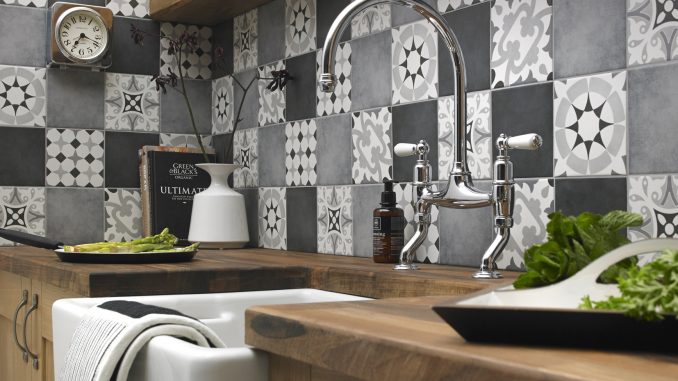
Floors made of ceramic tiles are suitable for practically any type of room and they are perfect for high-traffic areas such as corridor, kitchen, bathroom or living room. Tiled walls, in turn, are an impressive decoration of the kitchen or bathroom. However, it is crucial what tiles you choose for a specific place and their parameters. Here are some tips to help you choose the right type of tiles and get to know their parameters.
Ceramic Tiles for Walls

Choosing tiles for walls is primarily a matter of taste. In such a place, the technical parameters are not as important as on the floor and more important is the size of tiles, color and design.
Decorations
Tiles on the walls create exciting surfaces; they can be arranged by composing different colors and patterns. If you are looking for an idea for an original decorative wall, it is worth taking advantage of the collections offered by manufacturers that include basic tiles and matching wall decorations such as inserts and narrow strips. This solution is recommended for both small and large rooms.
Mosaic
It is a kind of cladding that looks very impressive. It subtly shines, beautifully decorates and what is very important, is ideally suited for finishing shelves, niches, various closets, of which there is never too many in small interiors. Mosaic can also be used in spacious bathing salons – it is perfect for separating zones, laying decorative strips or finishing rounded surfaces.
Large Format Tiles
They are currently the most popular type of tiles. The 60X60 cm or 75X75 cm formats are chosen for walls more and more often. Such tiles create calm uniform surfaces, especially when they are arranged almost jointless. They are most often available in subdued colors and motifs imitating wood, stone or concrete, so they are an excellent alternative for enthusiasts of these materials. Large tiles look better in spacious interiors – when we look at them from a distance, the joints become even less visible, and thus the effect is even better. In small kitchens or bathrooms, you have to make sure that the wall is not too small for large formats (avoid the situation when there will be one large tile and only one narrow strip of another one).
Ceramic Tiles for Floors

Crucial here is not only the design of tiles but also their parameters and technical characteristics. A resilient floor is a basis for designing interiors in which you can feel comfortable. So, what is most important when choosing ceramic tiles for the floor?
Abrasion Resistance Class
Determined with PEI symbol. It measures the resistance of glazed tiles to surface abrasion – the greater the PEI, the higher the abrasion resistance class. PEI 3/750 tiles can be successfully used in a living room but for high-traffic areas, such as the hall or the kitchen, it is better to choose those with a higher resistance, e.g., PEI 3/1500 or 4/6000.
Glazed and Unglazed Tiles
Glazed tiles are currently the most popular floor cladding for all indoor and outdoor applications, offering outstanding performance characteristics, such as low absorbability, high resistance to bending, high hardness and abrasion resistance. They can come in various surface types: matte, semi-polished and lappato (a kind of polished glaze). Glazing allows for achieving various visual effects and applying all types of graphics on the tile’s surface.
Skipping the glazing stage allows for obtaining unglazed tiles with surfaces that are very resistant to mechanical factors. This type of tiles is therefore intended mainly for investment applications, although due to the influence of modern interior trends, they are more and more frequently used in living quarters. Unglazed tiles come in three types of surface: matte, polished and structural. Both types of tiles can be used in the living room, kitchen and bathroom.
Unglazed tiles are recommended for high-traffic areas because they are very resistant to mechanical factors surface – they do not crack when something heavy falls on them, are not affected by chemicals, and are abrasion-resistant.
Anti-Slip Properties of Tiles
It is a parameter that affects your safety. Therefore, when selecting tiles for bathrooms, you should pay special attention to it. The symbols R9-R13 are used to indicate the level of anti-slip properties of tiles. The higher the value, the less slippery the tile.
For all your ceramic tiles needs, contact The Tile Gallery in Montmorency in Melbourne. With over 20 years in business, you can be sure to find the best quality ceramic tiles.

Leave a Reply